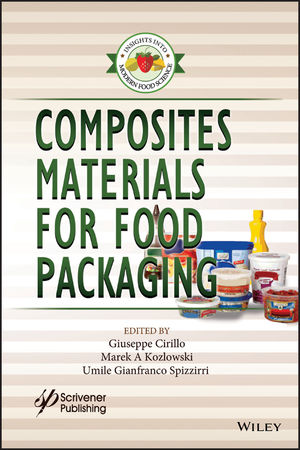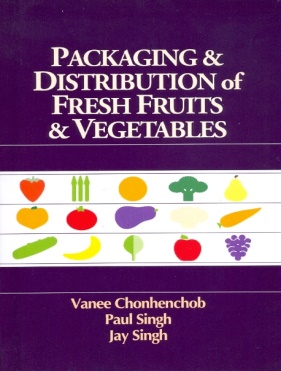High-pressure pasteurization (HPP) represents an important growth area for the food and beverage marketplace. In fact, one can find examples of foods processed by HPP in refrigerated cases throughout retail stores, including guacamole, fruit and vegetable drinks, lunch/deli meats, wet salads and dips, seafood/fish and ready meals.
In order to define the right package for HPP processing, one must first become familiar with what is different about the dynamics of HPP compared to other processing techniques.
Key differences:
- Complete submersion during pressure exposure results in the application of hydrostatic pressure; equal pressure is imposed on the pack and food from all directions. Uniaxial strength testing is not sufficiently predictive of performance in HPP.
- Headspace compression. At processing pressures, the headspace in the package is compressed to essentially zero. The package must deform or move as the effective internal volume in the package is reduced. Headspace in packages intended for HPP comprise not only the visibility inside the package, but also gases entrained in the product, both naturally occurring in the food or introduced by mixing, etc. prior to sealing the package.
- Pressure release. It takes time and specialized equipment to develop 87,000 psi. While not instantaneous, pressure release is much faster, and imposes a very different dynamic for the package to recover its shape as headspace reappears.
- Cold processing. The forces associated with the pressure cycle are significant, and occur in water temperatures a few degrees above freezing. Material properties at processing temperature are what matters.
These differences should lead to test package performance in a lab setting. Until you have high confidence filled packs survive the HPP cycle, avoid the expense of downtime from package failures in a commercial setting. Align yourself with an HPP equipment manufacturer who provides commercial scale equipment dedicated to testing of new product/package combinations.
Some observations of different package styles:
Flexible packages. Flexible film-based structures readily conform to the product as the pressure increases, and rarely experience permanent deformation. A wide variety of structures can be used, but take care that the sealant layer can effectively seal through product contamination in the seal area. Wider seals are recommended to create pack robustness.
Reclose zippers and dispensing fitments add complexity. Avoid directly exposing zippers to process water; use strong seals to isolate them. Fitment design combines consumer convenience with the need to avoid process water entry or product leakage during the cycle. Rigorous testing is essential, particularly if a new design fitment will be used.
Semi-rigid packages. This grouping includes bottles, trays, cups, bowls and other self-supporting packs. Semi-rigid is the key here; packs that break before distorting (such as rigid glass) or have no chance to recover shape change from headspace compression (think metal can) should not be considered.
Finding ways to minimize headspace reduces the potential for permanent deformation or catastrophic failure. While a permanently deformed package may not contaminate HPP process water and necessitate a cleanup, it results in an unsalable unit.
Blow molded bottles can be a relatively straightforward implementation, if simple sidewall designs are combined with rigid bottoms and top shoulders and finishes. Cylindrical or rounded corner sidewall cross-sections are preferred, providing large symmetrical areas to accommodate volume reduction and readily recovering original shape after processing.
Liners induction sealed to the finish under conventional screw top closures offer the greatest security through the pressure cycle, but “plug-style” closures increase consumer convenience. Start with a proven closure design, and design the bottle finish to work with it.
Trays are generally rectangular in cross-section with rounded corners, and are differentiated from tubs and bowls by their low height-to-top opening ratio. This style, either thermoformed or injection molded, is available with a wide variety of barrier properties. Lid films are thicker and stronger to withstand the tensile forces imposed during volume reduction.
Designs that bias flexing to sidewall corners and thinner bottom areas reduce stress elsewhere. Effective lidding seals are typically wider than normal, and require attention to registration of sealing heat/pressure to flanges.
Tubs, bowls and cups are generally round or oval in cross section, sometimes with subtle flat panels that create pseudo corners. They are also characterized by higher height-to-opening ratios than trays. Linear sidewalls connecting package bottoms to top flanges are a good starting point, as are rounded corners at the transition from sidewall to bottom.
Headspace minimization is most critical for this package type, particularly if differentiation is desired for sidewall appearance. Stress concentration coupled with thinner areas can lead to permanent deformation or catastrophic failure. Designs that build in preferential flexion areas and accommodate headspace volume loss and recovery can be an elusive target, and access to modeling can reduce the number of iterations required to achieve success.
Start early on packaging. Set realistic expectations because some designs just won’t work. Rely heavily on suppliers and other experts. Test rigorously and use what you learn.
HPP offers the opportunity to create better tasting, higher nutrition products with longer refrigerated shelf life. Finding the right package won’t always be easy, but success will be rewarding on many levels.









